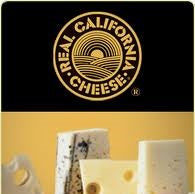One of the more confounding elements in wine is minerality. Even in the more comprehensive, advanced-level wine tasting classes I often see blank stares when it comes to this topic. Minerality is not something as easy to import into one’s wine lexicon as lemon, cherry, crushed basil or cinnamon. For most folks, fruits, herbs and spices are fairly familiar and if they haven’t actually tasted them, they have heard of them. But what about minerals? Think about salt for a moment. This is a good starting point. Take a pinch of salt and add it to some tap water. Taste this. Now take two pinches. What is different about the smell, taste, and texture of the water?
Let’s take this a step further. Minerals, inorganic solids such as sodium, calcium, magnesium, potassium, fluoride, iron, and manganese, are common in wine and water. Water picks up minerals as it travels through rocks. Vines pick up minerals as they drink water. Less ripe wines, those grown in cooler old world locations such as France, Italy and Germany for example, often showcase their minerality front and center – there is little to no fruit to mask it. With riper wines, we get a rainbow of fruit flavors, often lavish in-your-face sweet, vanilla-like oak, and higher alcohol, itself masking secondary flavors and skewing the wine sweeter still, at least in our perception of it.
To recognize minerality without the distraction of wines other components, taste high mineral content waters. There are no flavoring agents, sugars, or other ingredients to distract the palate. Taste multiple mineral waters and take note of what is different about their smell, taste, and mouth-feel, or texture.
Three of the best for this exercise are Italy’s S. Pellegrino, which is noticeably salty, Germany’s Gerolsteiner, very pungent as it is the water with the highest level of minerals in the world, and France’s Badoit, also high in minerality but much more gentle and understated, ideal for accompanying meals with fine food and wine.
In addition to tasting high mineral content waters, I always suggest a trip to the nearest garden center, where one can pick up and smell the various types of garden rocks. Roll them around in your hands, put them down, and then smell your hands. If the seashore is nearby, go there and smell the seashells. Anywhere you are, focus in on the aromas. This will come in handy as the body automatically files these away for use later, even years later. It is a perfectly natural, organic process to recognize minerality in wine. Want to check your progress? Go taste the leanest, lightest old world wine available – ideally something like a Chablis or Chinon from France. Taste, with eyes closed. And just like magic, there it is - minerality. Nicely done!
What is your favorite mineral water and why?
What is the most minerally wine you’ve had?



